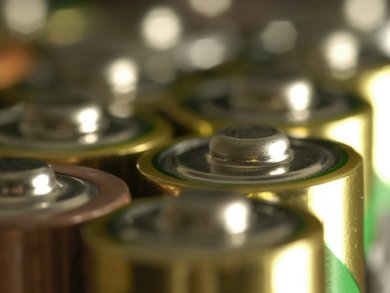The high-yielding fabrication of new materials to enable efficient energy storage has been tackled by collaborators based in Korea and the USA. Jaephil Cho and co-workers prepared ultralong germanium nanotubes from core–shell Ge–Sb nanowires, which have properties such as outstanding stability and rate capability that are well suited to anodes for high-power lithium-ion batteries.
They achieve this exceptional performance by exploiting the Kirkendall effect; where holes form as a result of the difference in diffusion fluxes of atoms across an interface at elevated temperature (700 °C). The promising anode material (see TEM image of the Ge NTs) has excellent lithium-ion diffusivity, 400 times faster than in Si, high electrical conductivity, 104 times higher than Si, and large theoretical specific capacity, corresponding to Li4.4Ge.
The authors believe that the remarkable performance of their GeNTs is attributed to the unique synthetic approach that exploits the Kirkendall effect, which produces tubular morphology with relatively uniform wall thickness.

Image: © Wiley-VCH
- Germanium Nanotubes Prepared by Using the Kirkendall Effect as Anodes for High-Rate Lithium Batteries
M.-H. Park, Y. Cho, K. Kim, J. Kim, M. Liu, J. Cho,
Angew. Chem. Int. Ed. 2011.
DOI: 10.1002/anie.201103062 - Angew. Chem. 2011.
DOI: 10.1002/ange.201103062
See also:



